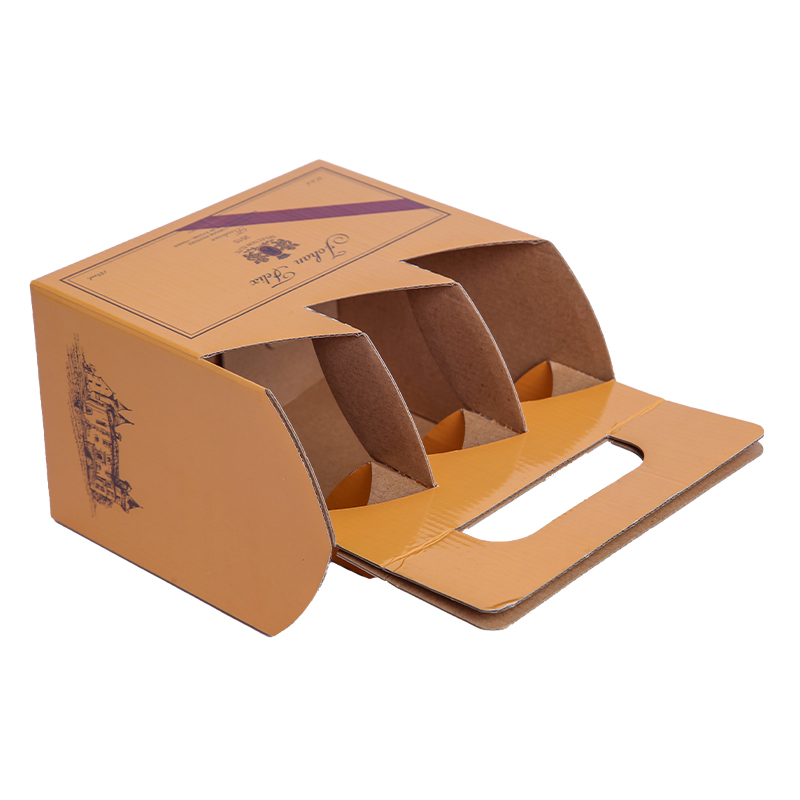-
 +86-0557-3781111 / +86-0571-56396277
+86-0557-3781111 / +86-0571-56396277
 +86-0557-3781111 / +86-0571-56396277
+86-0557-3781111 / +86-0571-56396277
Color psychology plays a crucial role in designing drinks packaging boxes because colors evoke emotions, convey messages, and influence consumer behavior. When targeting specific demographics, understanding how different colors resonate with various age groups, genders, lifestyles, and cultural backgrounds can significantly enhance the effectiveness of the packaging design. Below is an exploration of how color psychology influences packaging design for specific target demographics:
Children and Families
Colors to Use : Bright, vibrant colors such as red, yellow, blue, and green.
Red : Exciting, energetic, and attention-grabbing.
Yellow : Happy, cheerful, and playful.
Blue : Trustworthy, calming, and refreshing (often associated with water or sky).
Green : Natural, healthy, and eco-friendly.
Psychological Impact : These colors appeal to children's sense of fun and adventure while reassuring parents that the product is safe and enjoyable.
Examples : Juices, sodas, and milk-based drinks often use these colors to create a lively and engaging package.
Health-Conscious Adults
Colors to Use : Earthy tones like green, brown, beige, and soft blues.
Green : Represents health, nature, and sustainability.
Brown : Evokes feelings of wholesomeness and natural ingredients.
Soft Blues : Suggests purity, calmness, and hydration.
Psychological Impact : These colors communicate wellness, organic ingredients, and a commitment to health, which resonates with consumers looking for nutritious options.
Examples : Green smoothies, herbal teas, and plant-based beverages often feature these colors to emphasize their health benefits.
Young Adults and Trendsetters
Colors to Use : Bold, modern colors such as black, white, metallics (gold, silver), and neon shades.
Black and White : Sophisticated, sleek, and minimalist.
Metallics : Premium, luxurious, and trendy.
Neon Shades : Energetic, daring, and youthful.
Psychological Impact : These colors project confidence, innovation, and a desire to stand out, appealing to younger audiences who value style and individuality.
Examples : Energy drinks, craft sodas, and premium cocktails often use these colors to create a bold and edgy look.

Professional and Mature Consumers
Colors to Use : Neutral tones like gray, navy blue, deep purple, and gold.
Gray : Modern, professional, and understated.
Navy Blue : Trustworthy, reliable, and authoritative.
Deep Purple : Luxurious, sophisticated, and regal.
Gold : High-end, exclusive, and indulgent.
Psychological Impact : These colors convey quality, refinement, and reliability, making them ideal for products targeting older or more affluent consumers.
Examples : Fine wines, artisanal spirits, and gourmet coffee blends often incorporate these colors to reflect elegance and exclusivity.
Eco-Friendly and Sustainable Consumers
Colors to Use : Greens, browns, earthy tones, and muted pastels.
Green : Symbolizes environmental responsibility and sustainability.
Brown : Evokes natural materials and recyclability.
Muted Pastels : Soft and calming, suggesting harmony with nature.
Psychological Impact : These colors align with values of environmental consciousness and ethical consumption, appealing to eco-conscious buyers.
Examples : Organic juices, biodegradable bottled water, and fair-trade teas frequently use these colors to highlight their eco-friendly credentials.
Sports Enthusiasts and Athletes
Colors to Use : Bright, dynamic colors like red, orange, blue, and white.
Red : Energizing and motivating.
Orange : Invigorating and optimistic.
Blue : Refreshing and hydrating.
White : Clean and pure.
Psychological Impact : These colors suggest vitality, performance, and hydration, making them perfect for sports drinks and fitness-related beverages.
Examples : Sports drinks and electrolyte-enhanced waters often feature these colors to appeal to active individuals.
Luxury and Gourmet Markets
Colors to Use : Rich, dark hues like burgundy, black, gold, and deep red.
Burgundy : Elegant and timeless.
Black : Classic and high-end.
Gold : Opulent and luxurious.
Deep Red : Passionate and indulgent.
Psychological Impact : These colors communicate exclusivity, quality, and indulgence, attracting consumers seeking premium experiences.
Examples : Fine champagnes, imported beers, and exotic fruit juices often use these colors to emphasize their luxury positioning.
Gender-Specific Targeting
For Women : Soft, feminine colors like pink, lavender, light blue, and pastel shades.
Pink : Playful, romantic, and approachable.
Lavender : Calming and elegant.
Pastels : Gentle and inviting.
For Men : Dark, bold colors like charcoal gray, navy blue, and forest green.
Charcoal Gray : Masculine and modern.
Navy Blue : Strong and dependable.
Forest Green : Grounded and rugged.
Psychological Impact : Gender-specific colors help brands connect with their intended audience by reinforcing stereotypes or preferences associated with masculinity or femininity.
Cultural Considerations
Different cultures associate colors with varying meanings, so it's essential to consider regional preferences:
Red : In many Asian cultures, red symbolizes good luck and prosperity but may signify danger or urgency in Western contexts.
White : Often associated with purity and simplicity in Western cultures but represents mourning in some Eastern cultures.
Green : Universally linked to nature and growth but carries religious connotations in certain regions (e.g., Islam).
Annhiu Address: Yishan Road and Qingshengou Road Intersection, Suzhou Economic Development Zone, Anhui, China
Tel: +86-0557-3781111
E-mail: [email protected]
Hangzhou Address: Building 3, No.286, Renliang Road, Renhe Street, Yuhang District, Hangzhou, Zhejiang, China
Tel: +86-0571-56396277
E-mail: [email protected]
Copyright © Hangzhou Shengpin Packaging Co., Ltd. All Rights Reserved.
